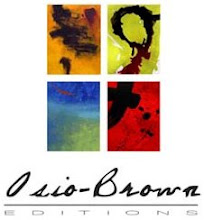The concept and language use of the term “limited edition print,” is often confusing and misunderstood. So, to begin with, let’s take a look at the terms “limited” and “edition” in hopes that we can gain some insight.
The word LIMITED indicates something that is small in range or scope. This one is pretty straight forward, meaning that there is a finite number of things in question.
EDITION refers to a collection of prints from the same original and usually printed at the same time. So if you print 50 images all at once, those 50 images are part of the same edition. If you print 30 more at a later time (and maybe at a different size or on a different medium) that would be considered another edition; not part of the original first edition. (See Wikipedia for more information.)
So when we combine “Limited” and “Edition” it implies that a small set number of prints were made from the original art at the same time and of the same size, implying that no further prints will be produced.
WIKIPEDIA’S PERSPECTIVE
Wikipedia defines a “Limited Edition” or “Special Edition” in the following way:
Limited editions have been standard in printmaking from the nineteenth century onwards. There is a genuine need for the concept here, as many traditional printmaking techniques can only produce a limited number of top-quality impressions, as copies of prints are known. This can be as few as ten or twenty for a technique like drypoint, but more commonly would be in the hundreds or thousands. But here as in other fields, the use of the concept has become largely driven by marketing imperatives, and has been misused in parts of the market. In particular, lithographic, photogravure, rotogravure, and computer reproductions of prints, derived from photographs of an original print, which are most unlikely to have any investment value, are often issued in limited editions implying that they will have such value. These need to be distinguished from the original artist’s print, carefully produced directly from his work in whatever the printmaking medium is, and printed under his supervision.
THE HISTORIC PERSPECTIVE
The concept of “limited editions” is a byproduct of historic printmaking techniques. Prior to modern photography, artists were limited to a range of printmaking techniques to create multiple reproductions of an art piece. These techniques typically included a plate of some sort that was used to create impressions on the final print medium. These plates were physically incapable of lasting indefinitely and many were only capable of producing a small number of prints before deteriorating past a usable state. The prints derived from these plates were also usually created at the same time because of the process involved to do so — it just wasn’t as feasible to create one at a time based on demand.
And so limited editions were not a marketing ploy to impose scarcity or even something that the artist chose to do. It was a burden of necessity based on the technology. The artist would make their prints, number them, and possibly sign them. And that was the end of that.
In today’s digital age, things are not so cut and dry as they once were. In order to avoid confusion or disputes with potential buyers, it is important to be careful about the terminology you use to describe your work and your limited edition prints. Always be forthright and honest as to the edition size and if there are any current of future editions of this original work planned. Finally, choose wisely in your relationship with your digital atelier or printmaker. Their knowledge, expertise and reputation can go a long way is assisting you and pointing you in the right direction.
Adam Brown

